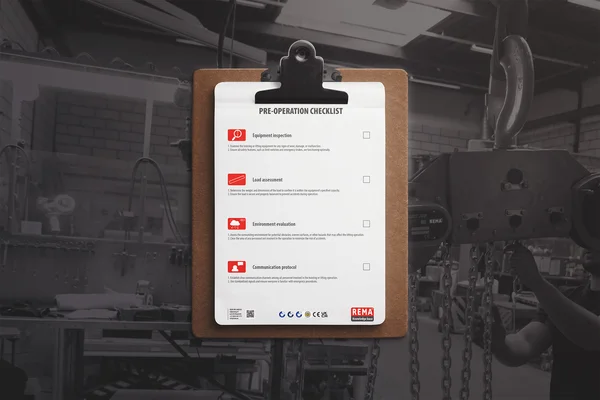Lifting operations require a deep understanding of hoisting and lifting equipment to ensure safety and efficiency. In an industry where precision is crucial, even minor errors can lead to severe consequences. Here, we highlight common scenarios that underscore the importance of proper equipment usage and share essential practices for safe lifting operations.
Let's delve into two scenarios that are unfortunately common in the lifting industry, serving as cautionary tales for those unaware of the critical importance of proper equipment usage:
-
Load Dynamics: Consider a scenario where a load starts swinging uncontrollably during a lift. This often results from misjudging the load's weight or inaccurately determining its center of gravity. Such mistakes can cause the load to become unbalanced, potentially leading to collisions with nearby structures or, in the worst case, detachment from the lifting device, endangering personnel and causing significant damage.
-
Choosing the Wrong Equipment: Another common issue is selecting inappropriate lifting equipment for the task. This can happen due to a lack of understanding of the available lifting solutions and their specific applications. Using unsuitable equipment not only endangers the operation but also the operators and the load
These examples highlight the critical need for comprehensive knowledge in lifting operations. Properly determining a load’s weight, identifying its center of gravity, securing it, and selecting the right lifting equipment are essential for safety and efficiency.
At Rema®, safety is not just a priority—it's a core principle. We are committed to fostering a culture of safety at every level of operation. To support this, we offer a Pre-Operation Checklist to ensure every lifting task starts with a focus on safety, awareness, and preparedness.
Pre-Operation Checklist: A Simple Foundation for Safety
-
Equipment Inspection: Before any lifting operation, thoroughly inspect the equipment. Check for signs of wear, damage, or malfunction that could compromise safety. Ensure that safety features like limit switches and emergency brakes are fully operational.
-
Load Assessment: Accurately assess the load by determining its exact weight and dimensions to ensure it is within the equipment’s safe operating capacity. Securely fasten and balance the load to prevent unexpected movement during the lift.
-
Environment Evaluation: Evaluate the lifting environment for potential hazards. Clear the area of obstacles and ensure only essential personnel are present to minimize accident risks.
-
Communication Protocol: Establish clear communication among all personnel involved in the lift. Agree on standardized signals and ensure everyone is familiar with emergency procedures.
At Rema®, we understand that our clients seek more than just lifting equipment—they seek assurance that their operations are safe and efficient. Our expertise, services, and resources, like the Pre-Operation Checklist, are designed to provide this assurance.
By embracing these safety and operational concepts, professionals in the field play a pivotal role in fostering a culture of safety and responsibility within their organizations.
We encourage you to download our Pre-Operation Checklist for free. Remember, safety in lifting operations is not just a guideline—it’s a commitment to everyone involved, ensuring each lift is conducted with efficiency, precision, and above all, safety.
With Rema®, safety is more than a priority—it's our solemn promise to you and your team.

